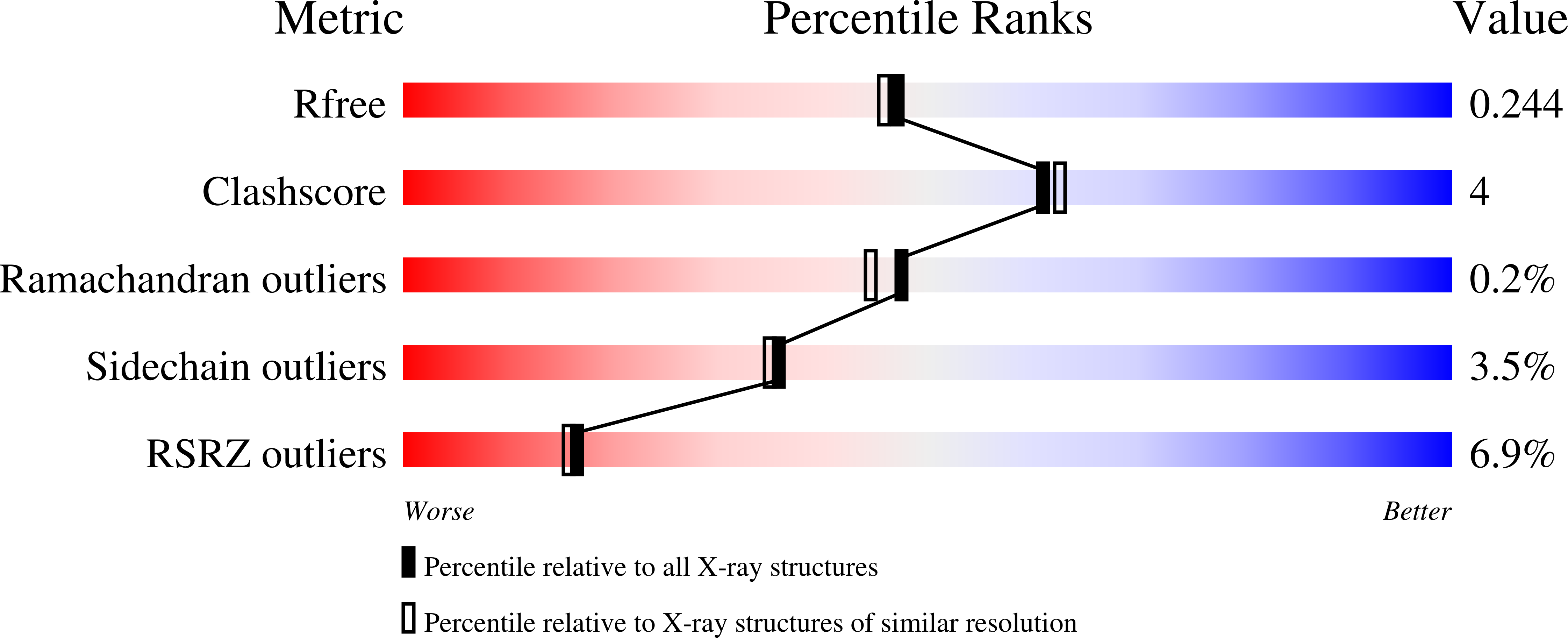Development of an Orally Available and Central Nervous System (CNS) Penetrant Toxoplasma gondii Calcium-Dependent Protein Kinase 1 (TgCDPK1) Inhibitor with Minimal Human Ether-a-go-go-Related Gene (hERG) Activity for the Treatment of Toxoplasmosis.
Vidadala, R.S., Rivas, K.L., Ojo, K.K., Hulverson, M.A., Zambriski, J.A., Bruzual, I., Schultz, T.L., Huang, W., Zhang, Z., Scheele, S., DeRocher, A.E., Choi, R., Barrett, L.K., Siddaramaiah, L.K., Hol, W.G., Fan, E., Merritt, E.A., Parsons, M., Freiberg, G., Marsh, K., Kempf, D.J., Carruthers, V.B., Isoherranen, N., Doggett, J.S., Van Voorhis, W.C., Maly, D.J.(2016) J Med Chem 59: 6531-6546
- PubMed: 27309760
- DOI: https://doi.org/10.1021/acs.jmedchem.6b00760
- Primary Citation of Related Structures:
4TZR, 6BFA - PubMed Abstract:
New therapies are needed for the treatment of toxoplasmosis, which is a disease caused by the protozoan parasite Toxoplasma gondii. To this end, we previously developed a potent and selective inhibitor (compound 1) of Toxoplasma gondii calcium-dependent protein kinase 1 (TgCDPK1) that possesses antitoxoplasmosis activity in vitro and in vivo. Unfortunately, 1 has potent human ether-a-go-go-related gene (hERG) inhibitory activity, associated with long Q-T syndrome, and consequently presents a cardiotoxicity risk. Here, we describe the identification of an optimized TgCDPK1 inhibitor 32, which does not have a hERG liability and possesses a favorable pharmacokinetic profile in small and large animals. 32 is CNS-penetrant and highly effective in acute and latent mouse models of T. gondii infection, significantly reducing the amount of parasite in the brain, spleen, and peritoneal fluid and reducing brain cysts by >85%. These properties make 32 a promising lead for the development of a new antitoxoplasmosis therapy.
Organizational Affiliation:
Department of Chemistry, University of Washington , Seattle, Washington 98195, United States.















